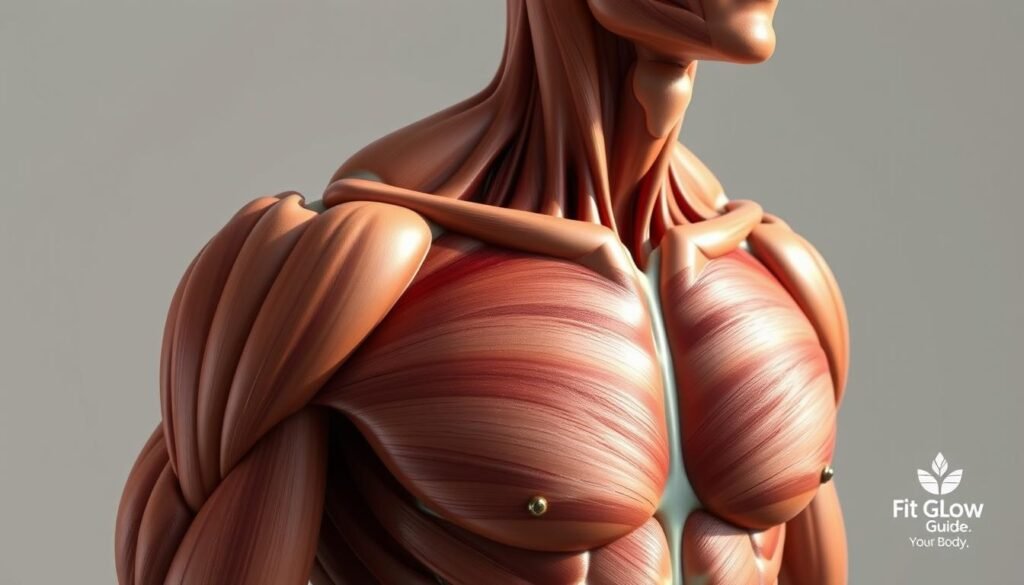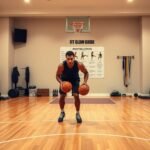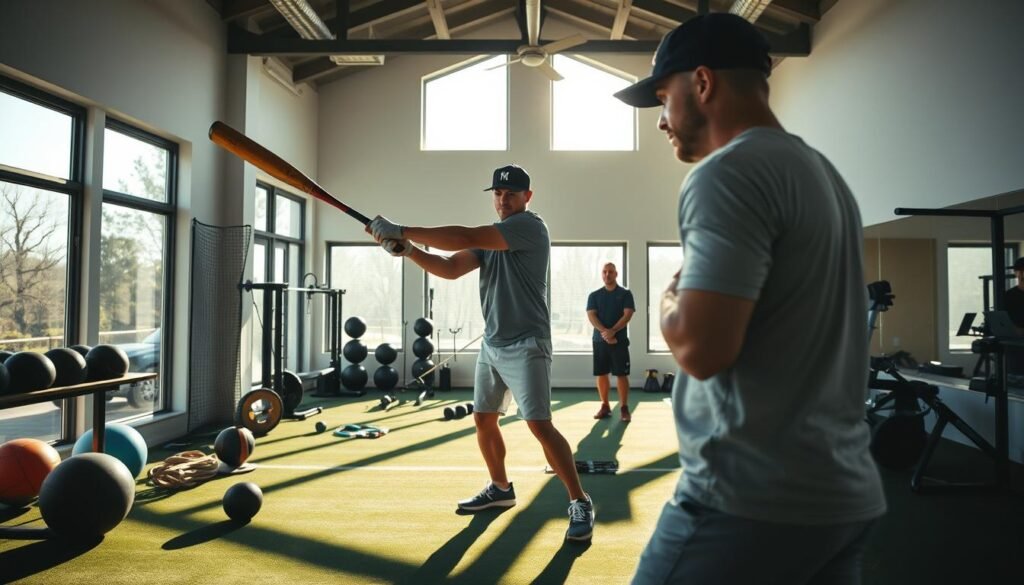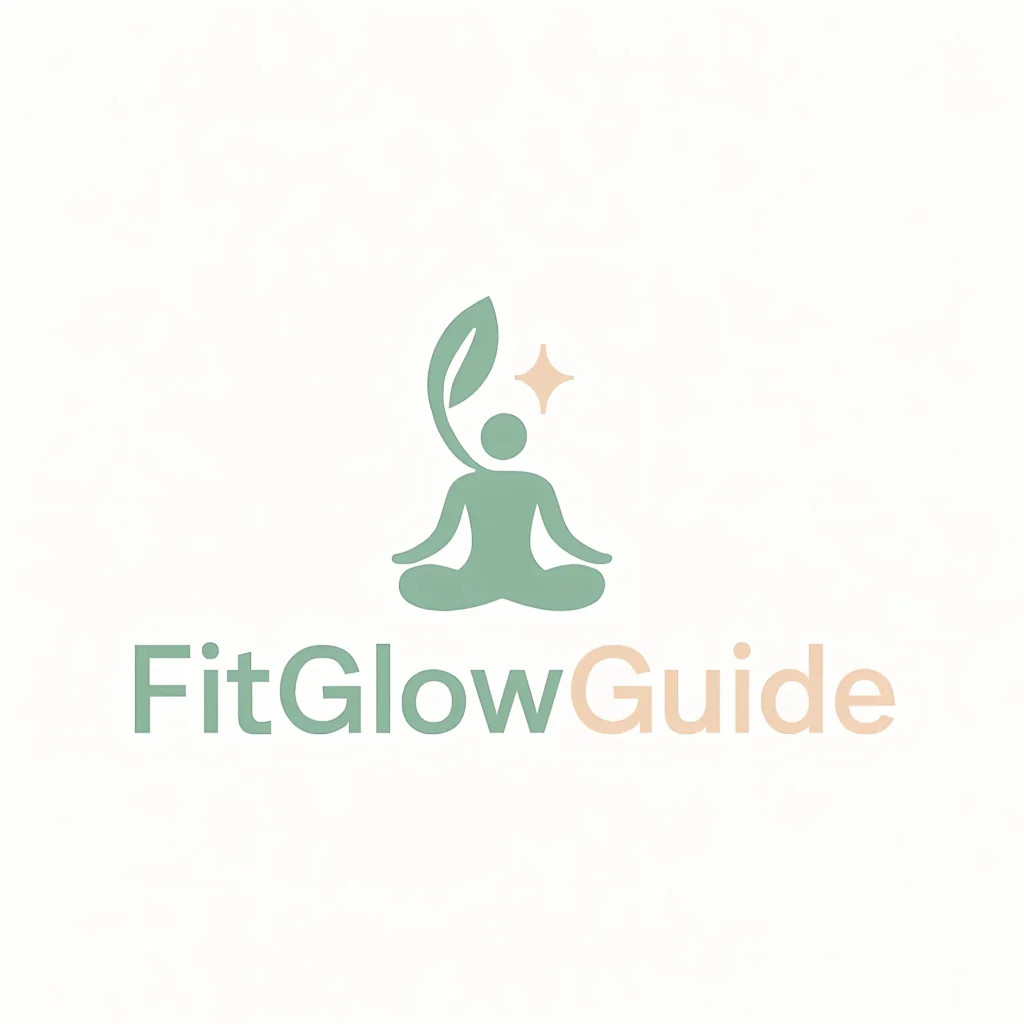The human body’s most mobile joint, the shoulder, plays a vital role in various everyday activities, from simple movements like lifting and carrying to complex actions like throwing and pushing.
A strong and flexible shoulder is essential for maintaining proper posture, preventing injuries, and enhancing overall upper body functionality.
The Fit Glow Guide philosophy, “Your Body. Your Glow. Your Guide,” emphasizes personalized approaches to fitness, including bodyweight exercises that target the shoulder muscles effectively.
Key Takeaways
- Effective bodyweight exercises for shoulder strength
- Importance of shoulder strength for everyday activities
- Proper form and consistency for optimal results
- Personalized approaches to shoulder training
- Comprehensive collection of beginner to advanced exercises
Understanding Your Shoulder Anatomy
Understanding the anatomy of the shoulder is essential for effective workouts and injury prevention. The shoulder is a complex structure that enables a wide range of movements, making it both highly versatile and potentially vulnerable to injury.
The Most Mobile Joint in Your Body
The shoulder joint is considered the most mobile joint in the human body, allowing for movement in multiple directions. This mobility is facilitated by the structure of the shoulder, which includes the shoulder joint and surrounding muscles. The combination of these elements enables actions such as lifting, pushing, and pulling.

Key Shoulder Muscles and Their Functions
The shoulder muscles play a crucial role in movement and stability. The deltoid muscles, which include the anterior, medial, and posterior delts, are key to various arm movements. The anterior delts, located at the front, assist in flexion and internal rotation. The medial delts, on the side, help with abduction, while the posterior delts, at the back, facilitate extension and lateral rotation.
| Muscle Group | Location | Primary Functions |
|---|---|---|
| Anterior Deltoids | Front of the upper arm | Flexion, internal rotation |
| Medial Deltoids | Side of the shoulder | Abduction |
| Posterior Deltoids | Back of the upper arm | Extension, lateral rotation |
Benefits of Bodyweight Shoulder Exercises
The benefits of bodyweight shoulder exercises extend beyond just strengthening your shoulders, improving overall body movement and posture. These exercises offer a multifaceted approach to enhancing upper body strength and stability.
Convenience and Accessibility
One of the primary advantages of bodyweight exercises is their convenience and accessibility. You can perform these exercises anywhere, at any time, without the need for specialized equipment. This makes it easier to maintain a consistent workout routine, even with a busy schedule.
Improved Strength and Joint Stability
Bodyweight shoulder exercises improve strength and enhance joint stability by engaging the muscles around the shoulder joint. This stability is crucial for preventing injuries and maintaining healthy shoulders. By strengthening the muscles and improving flexibility, you can achieve a better range of position and reduce stiffness.
Enhanced Posture and Functional Movement
Regularly practicing bodyweight shoulder exercises can lead to improved posture and functional movement. By strengthening the upper body and improving flexibility, these exercises help counteract the negative effects of prolonged sitting and screen time, promoting better alignment and reducing the risk of pain and injury.
| Benefits | Description |
|---|---|
| Improved Posture | Strengthens muscles that support proper spinal alignment |
| Enhanced Functional Movement | Improves ability to perform daily activities with ease |
| Increased Strength and Stability | Enhances overall upper body strength and shoulder stability |
Beginner Shoulder Workouts at Home (No Equipment)
Beginner-friendly shoulder workouts that don’t require any equipment can be seamlessly integrated into your home fitness routine. These exercises are designed to be simple, effective, and easy on the joints, making them perfect for those just starting out on their fitness journey.
Prone I to Y Exercise
The Prone I to Y Exercise is a great starting point for beginners. It involves lying on your stomach with your arms extended in front of you, then lifting your arms to form an “I” or a “Y” shape. This exercise helps improve shoulder mobility and strengthens the muscles around the shoulder joint.
Proper Form: Ensure your arms are straight and your shoulders are down, avoiding any strain on your neck.
Incline Push-Ups
Incline Push-Ups are a modified version of traditional push-ups, performed with your hands on a surface higher than your feet. This reduces the intensity on your shoulders and makes the exercise more accessible for beginners.
- Find a sturdy surface, like a chair or a wall, to perform the push-ups.
- Keep your body in a straight line from head to heels.
- Lower your body until your arms are bent at a 90-degree angle.
Wall Slides
Wall Slides are an excellent exercise for improving shoulder mobility and strength. Stand with your back against the wall and your arms extended, then slide your arms up and down.

Shoulder Taps
Shoulder Taps are performed in a plank position, where you lift one hand off the ground to tap the opposite shoulder, then switch. This exercise requires core stability and helps strengthen the shoulders.
“Shoulder taps are an effective beginner exercise that combines core stability with shoulder strengthening in a functional movement pattern.” – Fitness Expert
| Exercise | Reps | Sets |
|---|---|---|
| Prone I to Y | 10-15 | 3 |
| Incline Push-Ups | 8-12 | 3 |
| Wall Slides | 15-20 | 3 |
| Shoulder Taps | 10-15 | 3 |
By incorporating these exercises into your routine, you’ll be on your way to stronger, more stable shoulders without ever needing to step foot in a gym.
Intermediate Bodyweight Shoulder Exercises
As you progress in your fitness journey, incorporating intermediate bodyweight shoulder exercises can significantly enhance your shoulder strength and stability. These exercises are designed to challenge your shoulder muscles further, preparing you for more advanced workouts.
Plank to Downward Dog
The Plank to Downward Dog exercise is a dynamic movement that not only strengthens your shoulders but also engages your core and improves flexibility. Start in a plank position, with your hands shoulder-width apart and your body in a straight line from head to heels. From this position, lift your hips up and back, transitioning into a Downward Dog pose. Hold for a second, then return to the plank position. Repeat for the desired number of repetitions.

Crab Walk
The Crab Walk is an effective exercise for targeting the deltoids and improving overall shoulder mobility. To perform, start in a crab position with your hands under your shoulders and feet flat on the ground. Move sideways, keeping your body stiff and your shoulders engaged, to challenge your shoulder muscles and enhance stability.
Push-Back Push-Ups
Push-Back Push-Ups are a variation of traditional push-ups that specifically target the shoulder muscles. Begin in a push-up position, then lower your body until your chest nearly touches the ground. Push back to the starting position, and immediately push your body backward, maintaining a straight line from head to heels. This exercise challenges the anterior deltoids and improves overall shoulder strength.
Elbow to High Plank
The Elbow to High Plank transition is an excellent intermediate exercise that builds shoulder strength, stability, and endurance simultaneously. Begin in a forearm plank position with elbows directly beneath shoulders, forearms parallel, and body forming a straight line from head to heels. Engage your core tightly to prevent hip sagging or rotation during the transition phases of the movement. Place one palm flat on the ground where your elbow was, then do the same with the other hand, pushing up into a high plank position. Hold the high plank briefly before reversing the movement, lowering one elbow at a time back to the starting forearm plank position. Alternate the starting arm with each repetition to ensure balanced development of both shoulders.
| Exercise | Primary Muscle Group | Repetitions |
|---|---|---|
| Plank to Downward Dog | Shoulders, Core | 8-12 |
| Crab Walk | Deltoids | 10-15 steps |
| Push-Back Push-Ups | Anterior Deltoids | 8-12 |
| Elbow to High Plank | Shoulders, Core | 6-10 |
Advanced Shoulder Strengthening Moves
Elevate your shoulder workout with these advanced moves that demand strength, stability, and body control. These exercises are designed to challenge your shoulder muscles further, helping you achieve greater strength and flexibility.
Pike Push-Ups
Pike push-ups are an effective exercise for targeting the deltoids and triceps. Start in a downward-facing dog position with your hips lifted high and your arms straight. Lower your head towards the ground by bending your elbows, then push back up to the starting position. Keep your core engaged and your body in a straight line from head to heels. Focus on slow, controlled movements to maximize the effectiveness of this exercise.
Wall Walks
Wall walks are a great progression towards achieving a handstand push-up. Begin by standing with your feet shoulder-width apart, then place your hands on the ground and walk your feet up a wall as you walk your hands forward. Maintain a tight core and controlled movement as you walk your feet up the wall, holding the position for a few seconds before slowly lowering back down.

Side Plank with Leg Raises
The side plank with leg raises targets the deltoids, as well as the core and leg muscles. Start in a side plank position with your feet stacked and your body in a straight line. Lift your top leg towards the ceiling, keeping it straight, then lower it back down without touching the ground. Repeat on the other side to maintain balance and symmetry in your workout.
Handstand Push-Ups
Handstand push-ups represent the pinnacle of bodyweight shoulder training, requiring exceptional strength, stability, and body control. Begin by kicking up into a handstand position against a wall, with your hands slightly wider than shoulder-width apart. Lower your body by bending your elbows until your head is as close to the ground as possible, then push back up to the starting position by fully extending your arms. Focus on maintaining a tight core and controlled movement throughout the exercise.
- Engage your core and glutes tightly to maintain a straight body alignment throughout the movement.
- Lower your body with controlled movement by bending your elbows.
- Push back up to the starting position by fully extending your arms.
Creating Your Shoulder Workout Routine
With bodyweight shoulder exercises, you can create a versatile and effective workout routine at home. The key is to understand your current fitness level and goals.
Frequency and Recovery Guidelines
For optimal results, it’s crucial to balance exercise frequency with adequate recovery time. Aim to train your shoulders 2-3 times a week, allowing at least 48 hours of rest between sessions targeting the same muscle groups.
Sample Workout Plans for Different Fitness Levels
Beginners can start with simple bodyweight exercises like shoulder taps and wall slides. Intermediate individuals can progress to more challenging movements such as plank to downward dog and crab walks. Advanced practitioners can incorporate exercises like pike push-ups and handstand push-ups into their routine.
- Beginner: Shoulder taps, wall slides, and prone I to Y exercises.
- Intermediate: Plank to downward dog, crab walks, and push-back push-ups.
- Advanced: Pike push-ups, wall walks, and handstand push-ups.
Progression Strategies
To continue making gains, implement progressive overload by manipulating time under tension, leverage, or advancing to more challenging exercise variations. Techniques include tempo manipulation, isometric holds, and reducing points of contact or support.
- Use tempo manipulation to increase difficulty.
- Incorporate isometric holds at challenging positions.
- Gradually reduce points of contact or support.
Conclusion
By incorporating progressive bodyweight shoulder exercises into your fitness routine, you can develop stronger, more defined shoulders without any equipment. Understanding your shoulder anatomy and targeting all deltoid heads ensures balanced strength and aesthetics. The shoulder workouts at home (no equipment) approach offers convenience and accessibility, making consistent training achievable. Following the Fit Glow Guide philosophy, “Your Body. Your Glow. Your Guide,” these workouts can be personalized to your needs and goals. With dedication, you’ll not only enhance shoulder strength but also improve posture and functional movement.
FAQ
What are the benefits of doing bodyweight exercises for my shoulders?
Bodyweight exercises offer convenience and accessibility, allowing you to strengthen your shoulder muscles without any special equipment. They also improve joint stability and enhance overall posture and functional movement.
How often should I do shoulder exercises to see results?
For optimal results, aim to exercise your shoulders 2-3 times a week, allowing for adequate recovery time between sessions. This frequency helps promote muscle growth and strength.
Can I do shoulder exercises if I have a pre-existing shoulder injury?
If you have a pre-existing shoulder injury, it’s essential to consult with a healthcare professional or physical therapist before starting any new exercise routine. They can help you modify exercises or recommend alternative movements that are safe and beneficial for your specific condition.
How do I progress from beginner to advanced shoulder exercises?
To progress, focus on gradually increasing the difficulty of exercises by modifying the angle, depth, or range of motion. For example, you can move from incline push-ups to pike push-ups or from wall slides to wall walks.
Are bodyweight shoulder exercises effective for building strength?
Yes, bodyweight exercises can be highly effective for building strength in your shoulders. By engaging your muscles and challenging yourself with progressive movements, you can achieve significant gains in strength and overall fitness.
How do I maintain proper form during bodyweight shoulder exercises?
To maintain proper form, focus on engaging your core muscles, keeping your body in a straight line, and avoiding any jerky or bouncy movements. It’s also helpful to practice in front of a mirror or record yourself to identify areas for improvement.













